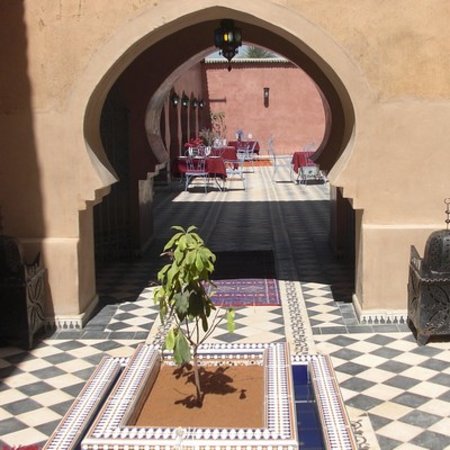Tarodant: a city rich in cultural heritage.





The Wall of Taroudant
With a mature that is 7.5 km long. with 19 bastions and Towers 130 corner It is also pierced by five gates:
Kasbah Bab-al-,
Zorgan-Bab,
Targhount-Bab,
Bab Oulad-Bounouna
Bab El-khemis.
The most important by its size and its location is the gateway called "Kasbah" and is located on the eastern flank of a few dozen meters from the Kasbah. It is a bastion door, flanked by two massive towers that protrude on the enclosure. The south side of the city is served by the gate called "Bab Zorgane."
This gate as well as so-called "Bab el Khemis" and "Bab Oulad Bounouna" are all bent and have a vestibule open. Bab Bab Sensla Zorgane and are dominated by a fortified towers and battlements. Smaller in size than the previous "Bab Targhount" has against a covered vestibule.
Kasbah:
Located at the intersection of the Souss valley and the mountains of the High Atlas, the "Pearl of the South" provides an excellent overview of southern Morocco. First capital of the sixteenth century Saadian, refuge of the rebel princes, coveted by the southern tribes, Taroudannt holds an important place in the history of Morocco.
Nowadays, people are looking for rest in the shadow of its beautiful ocher walls. Also known for its crafts and Berber jewelry, it attracts many tourists.


Medina:
The Commercial Taroudant was at this time very important since it represented an essential step in the trade that linked Morocco and Sudan.
Although Taroudant was cited by medieval chronicles since the High Middle Ages, the city will acquire all its importance with the Almoravid and Almohad dynasties that go into a military base for the control region of Sous, ensuring the even the caravan trade from the Sahara.
The advent of Mérinides was relegated to second city for two centuries to other centers like Sub Tiout and Tidsi. Taroudant City owes its brilliance and its urban development the Saadian dynasty. And it is the sovereign Mohamed al sheikh who proceeded to renovate the fallen capital and erected the great mosque and madrasah which is contiguous. He also gave orders to build the Kasbah sultanic and began building the enclosure. Following this work the city took the name of his renovator and was called "al-Mohammadia".